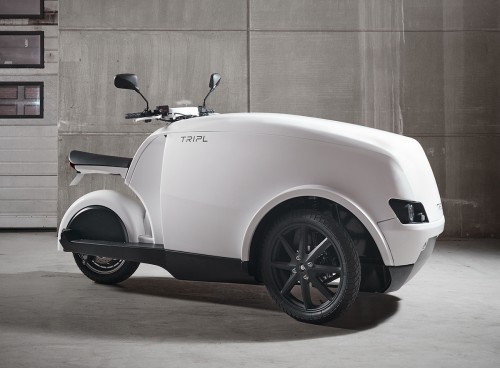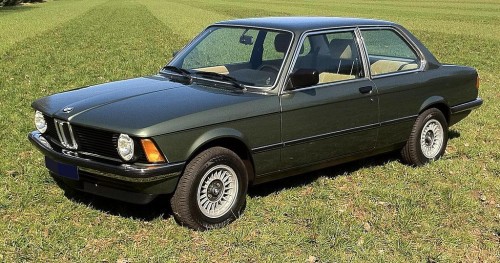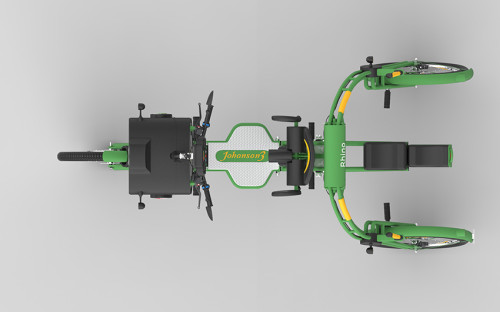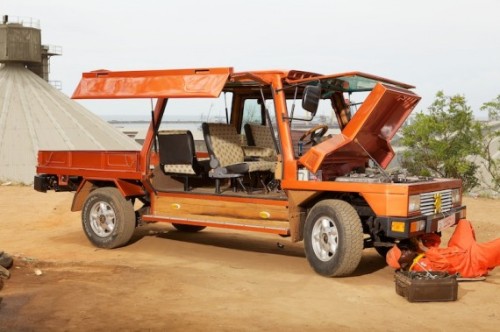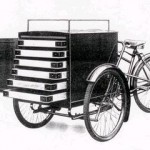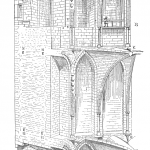Denmark’s Tripl electric motorbike has more cargo space than a Mercedes E-Class estate. The vehicle is aimed at goods delivery in large cities. Heated and refrigerated cargo boxes are available. Some specifications:
- Cargo volume: 750 litres
- Load capacity: 200 kg
- Electric motor: 4 kW
- Top speed: 45 km/h (28 mph)
- Battery: 5.3 kWh / 6.7 kWh / 8 kWh
- Charging time: 5.3 – 8 hours
- Range: 70-100 km (with 8 kWh battery), 50-80 km (6.7 kWh battery), 30-60 km (5.3 kWh battery)
- Weight excl. battery: 221 kg
- Weight with 8 kWh battery: 301 kg
- Length: 241 cm
- Width: 127 cm
- Height: 1170 cm
- Wheelbase: 150 cm
- Turning diameter: 7.5 m
